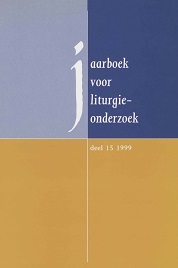De iconografie van de middeleeuwse doopvont in Nederland
Abstract
Several medieval baptismal fonts have been preserved in the Netherlands that bear a variety of iconographic images. The figuration on the Romanesque fonts is almost exclusively that of the lion at the base, a symbol of the battle between good and evil. In the case of the stone and brass fonts of the late medieval period, a distinction can be made between images that are not directly related to baptism and images that are. One group of images not connected with baptism consists of representations of saints: the four evangelists (3 fonts), the twelve apostles (1 font), and various saints (5 fonts). A second group includes symbols of Christ: the pelican (4 fonts), the Lamb of God (1 font), the deer (1 font), and the five wounds (1 font). Thirdly, there is God the Father (1 font). The most frequently appearing image that does relate to baptism is that of the baptism of Christ in the river Jordan (4 fonts). Of special interest are the two images on the font from Wier: a priest at a font and the ritual cleansing of the woman. The latter is not mentioned in any literature on the fonts in Europe. Three Dutch fonts carry images that are mentioned in the literature on the iconography of the baptism in general but not in the sources about the iconographic representations on fonts. These are the conversation between Christ and the Samaritan woman (Wier, ca. 1520), the sick around the pool of Bethesda (’s-Hertogenbosch, 1492), and the relationship between the baptism of Jesus and several images from the Old Testament (Zaltbommel, 1554).


